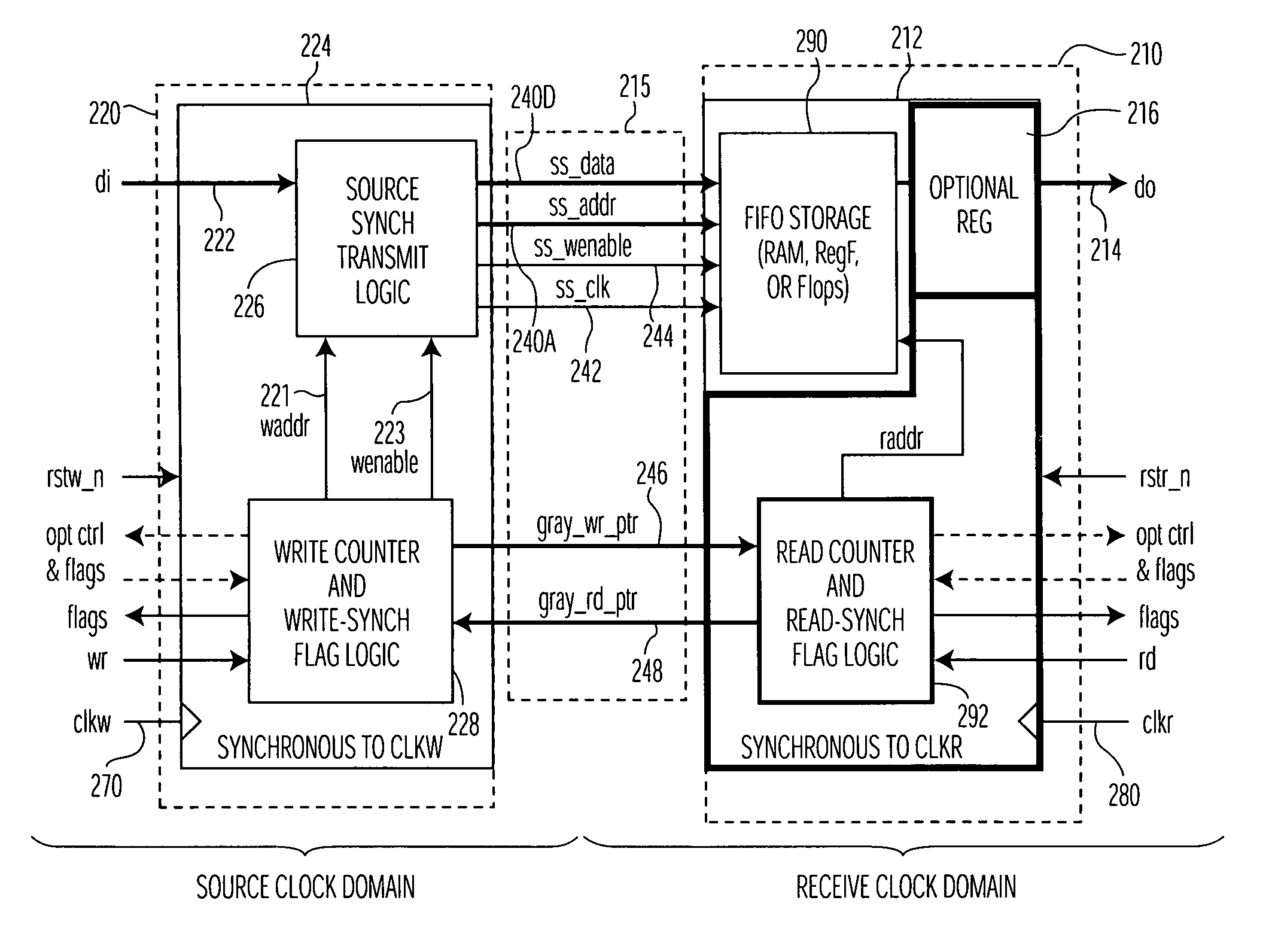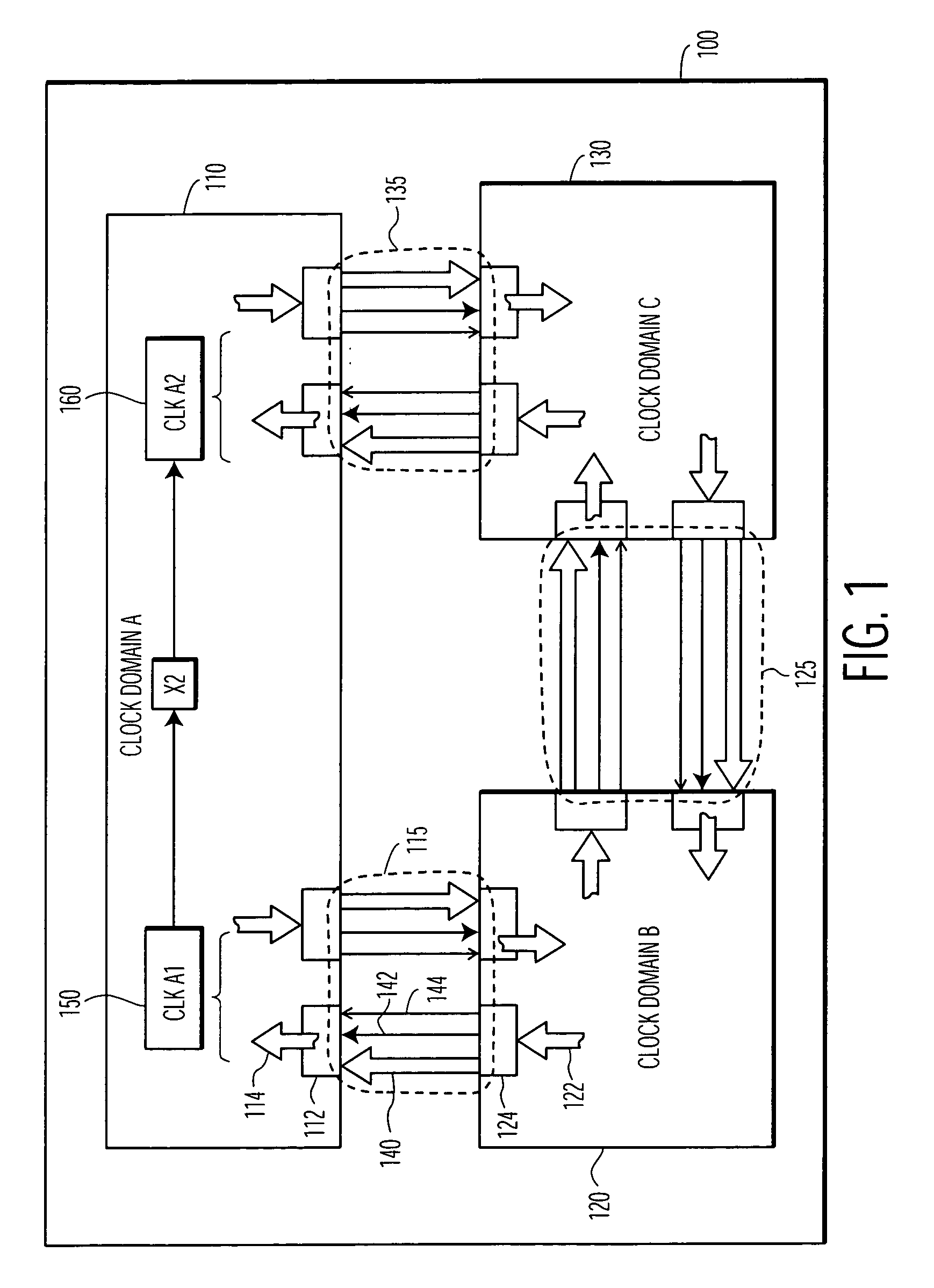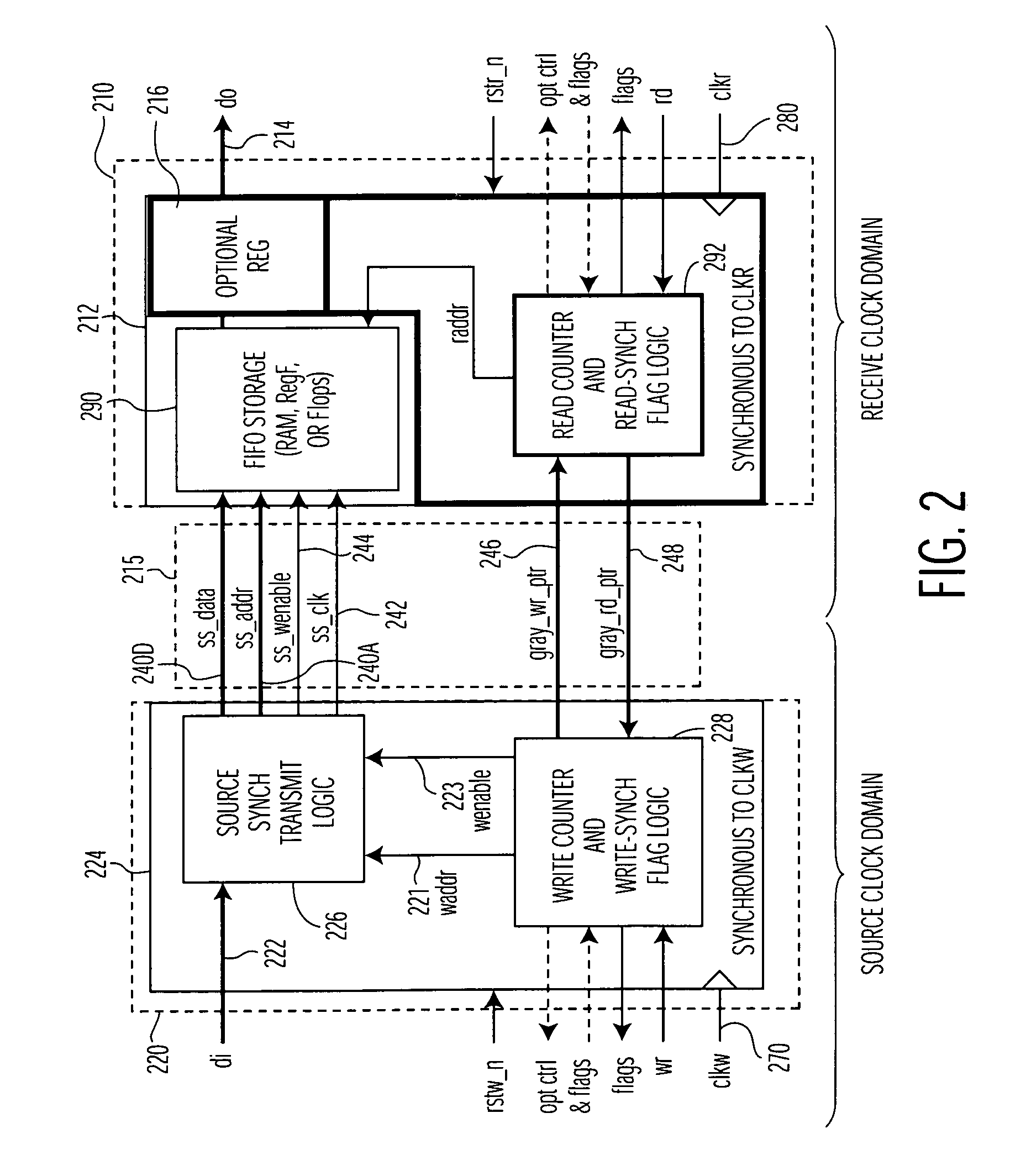Clock domain crossing FIFO
a clock domain and fifo technology, applied in the field of data communication, can solve the problems of increasing the skew concern of the over-extended clock signal, the anticipated amount of time skew between transmitted data signals, and the sensitiveness of the chip-set design to practicable limitations in terms of implementation space and available operating power
- Summary
- Abstract
- Description
- Claims
- Application Information
AI Technical Summary
Benefits of technology
Problems solved by technology
Method used
Image
Examples
Embodiment Construction
[0023]The present invention is believed to be applicable to a variety of different types of electronic circuits, and has been found to be particularly suited for use in connection with integrated circuits implemented with a plurality of clock domains and parallel data communications therebetween. While the present invention is not necessarily limited to such devices, an appreciation of various aspects of the invention is best gained through a discussion of various examples using this application.
[0024]According to a general example embodiment of the present invention, data originating from circuits within a source clock domain is transmitted through a data buffering arrangement to circuits within a receive clock domain. The data is written into the buffering arrangement synchronous with a source clock (a write clock) of the source clock domain, and read from the buffering function synchronous with a receive clock (a read clock) of the receive clock domain. The buffering arrangement ...
PUM
 Login to View More
Login to View More Abstract
Description
Claims
Application Information
 Login to View More
Login to View More - R&D
- Intellectual Property
- Life Sciences
- Materials
- Tech Scout
- Unparalleled Data Quality
- Higher Quality Content
- 60% Fewer Hallucinations
Browse by: Latest US Patents, China's latest patents, Technical Efficacy Thesaurus, Application Domain, Technology Topic, Popular Technical Reports.
© 2025 PatSnap. All rights reserved.Legal|Privacy policy|Modern Slavery Act Transparency Statement|Sitemap|About US| Contact US: help@patsnap.com



